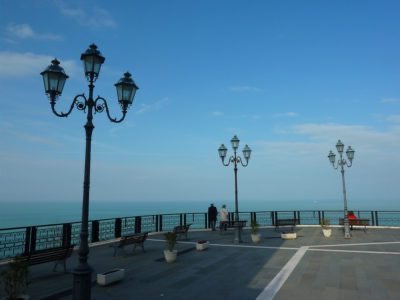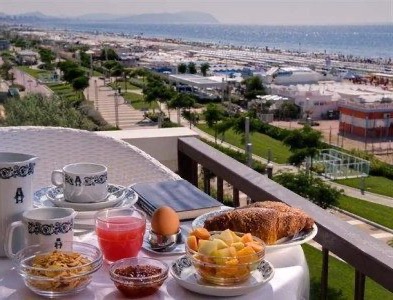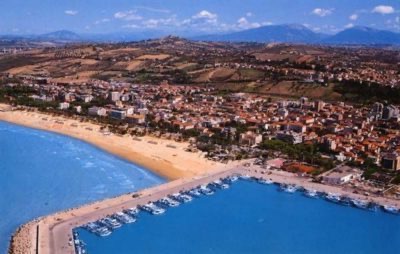Poetic atmospheres and wonderful sea views: all this is San Vito Chietino. Read the post and set off to discover this small ancient village.
San Vito Chietino is a small village of 4000 inhabitants, located in the province of Chieti, in Abruzzo, the region that boasts the title of Green region of Europe.
The village stands on a rocky spur that descends towards the sea. From here you can admire breathtaking views of the sea Adriatic Majella, massif ofCentral Apennines.

The historic center of San Vito Chietino
The historic center, of medieval origin, is located on a hill 120 meters above sea level. It is from there that it is possible to stop and observe the wonderful landscape. Along Corso Trento and Trieste, you reach the Church of San Francesco, behind which opens the Belvedere Guglielmo Marconi. You sit on a bench and relax looking at the sea.
The trabocchi told by D'Annunzio
In addition to the blue, the view offers the green of the hills covered with vineyards and olive groves and a long strip of coastline interspersed with the so-called overflow, symbol of this coast, ancient fishing machines similar to stilts where fishermen families once lived.

The trabocchi come to life in a description written by the poet vate Gabriele D'Annunzio, a native of Pescara, in The Triumph of Death:
“The great fishing machine made up of intertwined logs, planks and hawsers glowed white like the colossal skeleton of an antediluvian amphibian. It seemed to live a life of its own having an air and an effigy of an animated body. The wood exposed for years and years to the sun, to the rain, to the gust showed its fiber, it was flaking and consumed, it became white like a shank or shiny like silver or grayish like flint, acquired a distinct imprint like that of a person on whom old age and suffering had done their cruel work ».

This is why the Abruzzese are very attached to these historic buildings. And it is for their high presence that the coast is called Trabocchi coast.
The ancient Church of the Immaculate Conception
Returning to the historic center and its monuments, it is necessary to visit the most important building of the village, the parish church ofImmaculate Conception, from the XNUMXth century, with a travertine façade and staircase, which stands on Corso Matteotti. Inside there are some XNUMXth century goldsmith works.
The atmosphere of San Vito Marina
Going down towards the sea, the blue of the Adriatic appears at every bend, and accompanies you until you reach the hamlet of San Vito Marina, a seaside resort that in recent years is increasingly frequented by Italian and foreign tourists. San Vito Marina makes you fall in love with yourself because here you can breathe a particular air: you immerse yourself in an atmosphere that recalls the small seaside villages where time stops, you forget the daily chaos and to feel good you just need the smell of sea, the taste of fish that can be tasted in the kiosks along the road and a walk on the San Vito pier.

A historic place to stop is the old ice cream parlor Copa de Dora, active since 1940 and where it is a must to stop to cool off after a long day at the beach, savoring its timeless ice creams.
Leaving Copa de Dora to the right and continuing on the National Adriatic, not only is it possible to see more closely the historic trabocchi, but you can book a lunch or dinner, to taste fresh fish suspended over the sea or go down to the stony beach to a bath in the transparent water of the Adriatic.
The Dannunziano Hermitage in Portelle
Continuing south, you arrive in Location Portelle, where another symbol of Abruzzo history is hidden: Eremo Dannunziano. An ancient farmhouse located on a promontory of the trabocchi coast, from which a suggestive landscape opens up. During the summer of 1889, this is where the poet Vate began writing The Triumph of Death. And it is here that the remains of Barbara Leoni are kept, his mistress who lived with her beloved in that house for a short period.
San Vito can be visited in less than a day, but I recommend staying at least three. You will gradually discover the history and culture of Abruzzo and enter the magical atmosphere of this small village.

























